In response to the fiscal year (FY) 2024 Labor, Health and Human Services, and Education (Labor-HHS-Education) appropriations bill’s proposal to eliminate federal funding for the Corporation for Public Broadcasting (CPB), Interconnection, and Ready To Learn, we asked station leaders how the loss of federal funding would affect their ability to serve their communities. The responses were eye-opening.
Federal Funding Cuts Would Impact Every Station
Of the nearly 230 stations who responded, almost every station acknowledged that if federal funding is severely reduced or eliminated, cuts to jobs, programming and community-based services would be imminent. The result: public media would cease to exist.
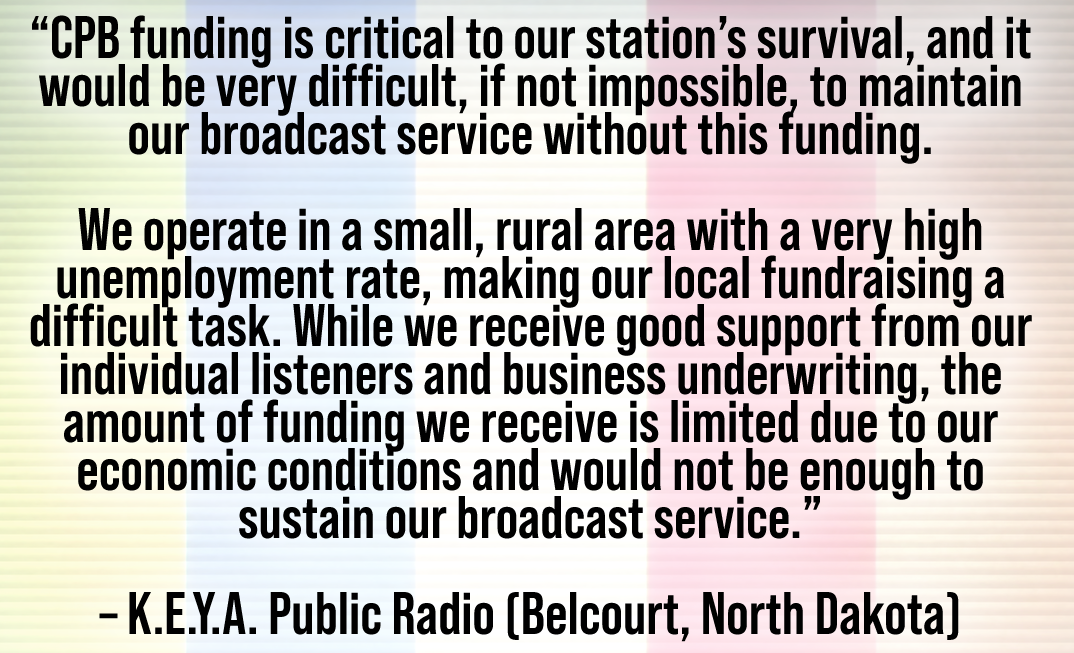
Many Rural Communities Could Lose Access to Their Only Local Media Source
While every station would be affected by funding cuts, responses revealed that those serving rural, island, and tribal communities would face the most severe consequences. Twenty-six stations confirmed that they would be forced off-air, and 23 more stations would need to reduce their coverage areas, cutting off rural listeners due to the high costs of reaching these communities. If public media is defunded, that could mean as many as 46.1 million Americans residing in rural areas could lose access to their only source of local media.
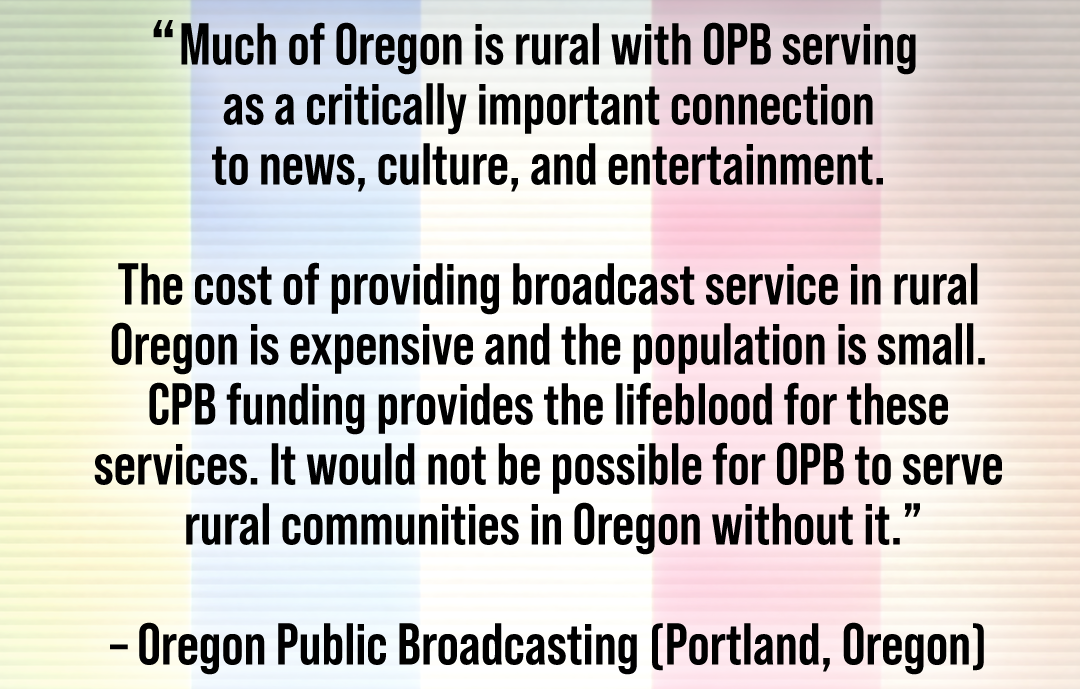
Communities Would Lose Access to Lifesaving Information
In addition to the loss of rural service, twenty-five stations reported that they could not maintain their broadcast infrastructure to deliver lifesaving alerts and warnings if funding was eliminated. This would result in a grave situation for communities facing severe weather conditions, AMBER alerts, and other crises.
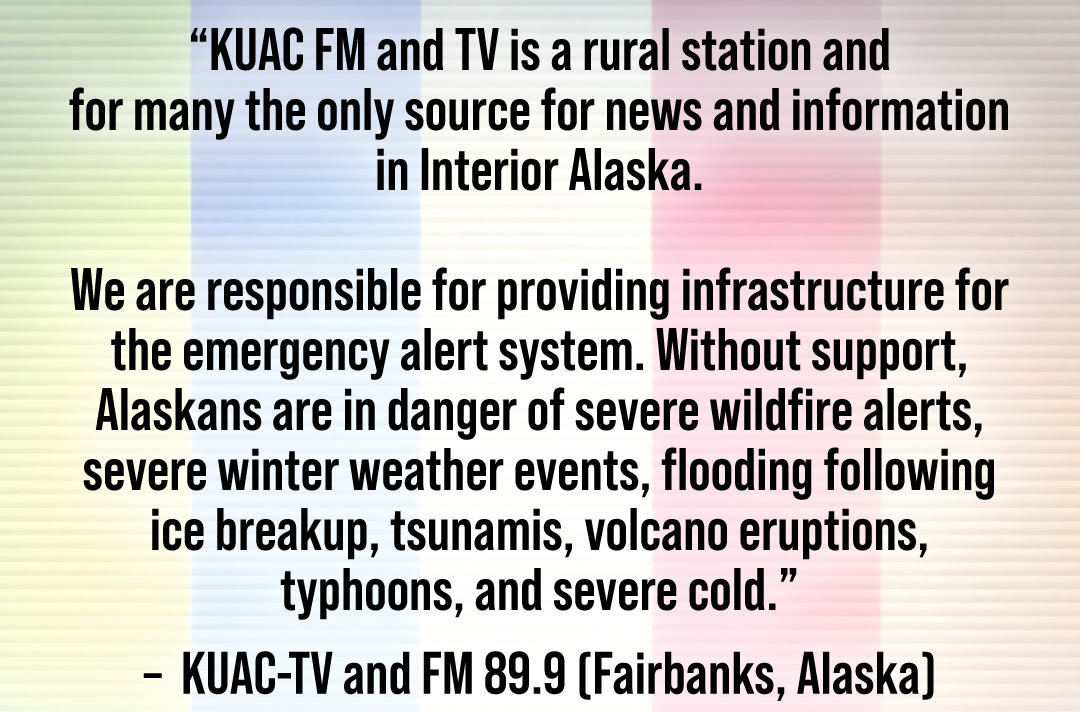
Local News, Storytelling and Cultural Preservation Would Decline
Undoubtedly, public media newsroom and production teams would shrink if federal funding were cut or eliminated. More than half of all respondents expressed concern that local programming, cultural preservation services, community conversations, and local journalism would suffer. As America faces a news and information crisis with more than 70 million Americans lacking access to credible local news, cuts to public media funding would only worsen this situation.
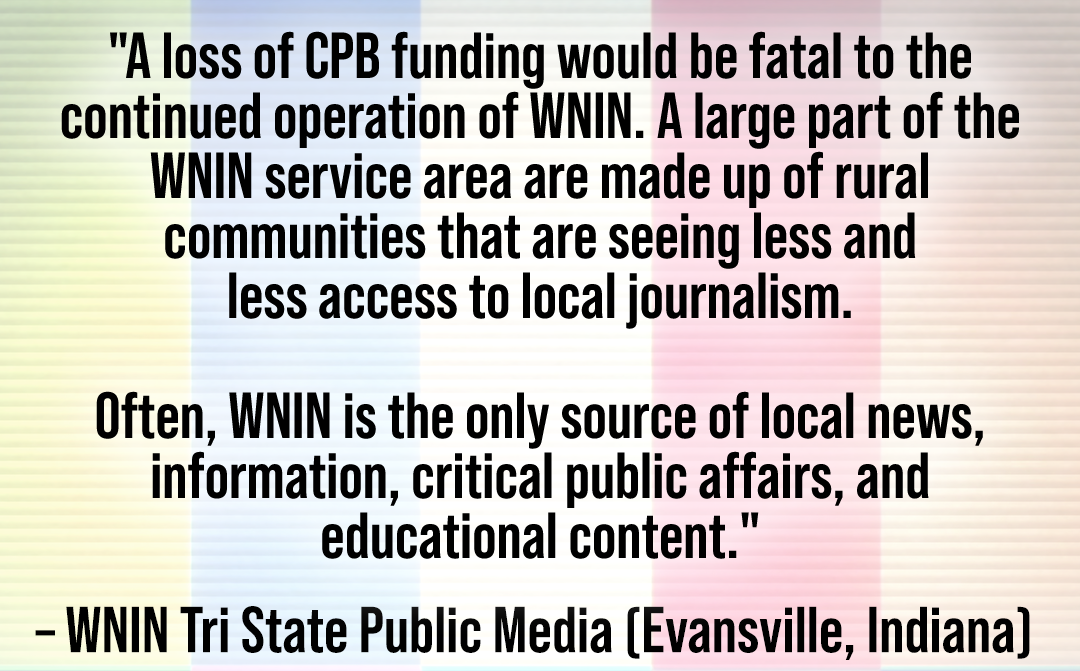
Moreover, public media was created to celebrate and preserve our communities’ diverse cultures and experiences and address local issues. For tribal stations, Native language, cultural preservation, connecting with elders, and forums to discuss community happenings are at the heart of their service. Public media stations’ local programming and community conversations have even led to policy changes. For example, a documentary by Milwaukee PBS instigated the creation of peer-to-peer suicide prevention programs in schools across Wisconsin.
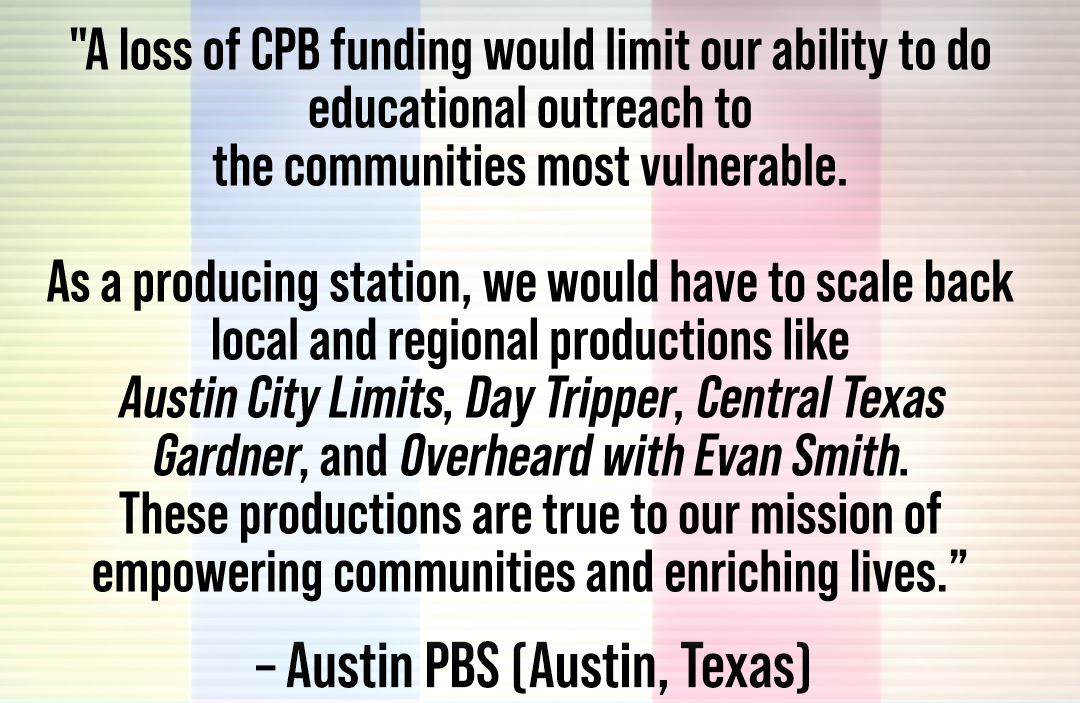
Access to Effective Educational Resources and Community Outreach Services Would Be Reduced 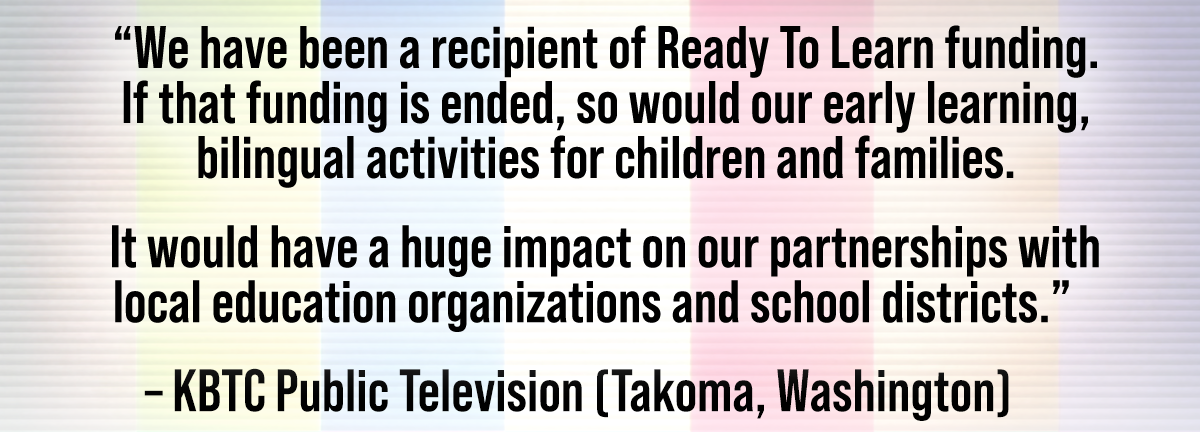
Since its inception, public media’s mission has been rooted in expanding access to education. Today, stations train future media makers, host educational outreach events, camps, and other learning opportunities to support underserved children and families, develop educational programming, and offer local educators classroom resources and professional certifications. Additionally, as national reading and math scores declined during the COVID-19 pandemic, public media stations offered more resources and outreach to improve students’ academic outcomes. Fifty-one stations signaled that their educational services would be greatly reduced or vanish without federal funding.
While these responses are deeply troubling, they’re not surprising. A Government Accountability Office Report (GAO) concluded that there is no viable private substitute for the federal funding that ensures almost every American community can access public media’s programming and services.
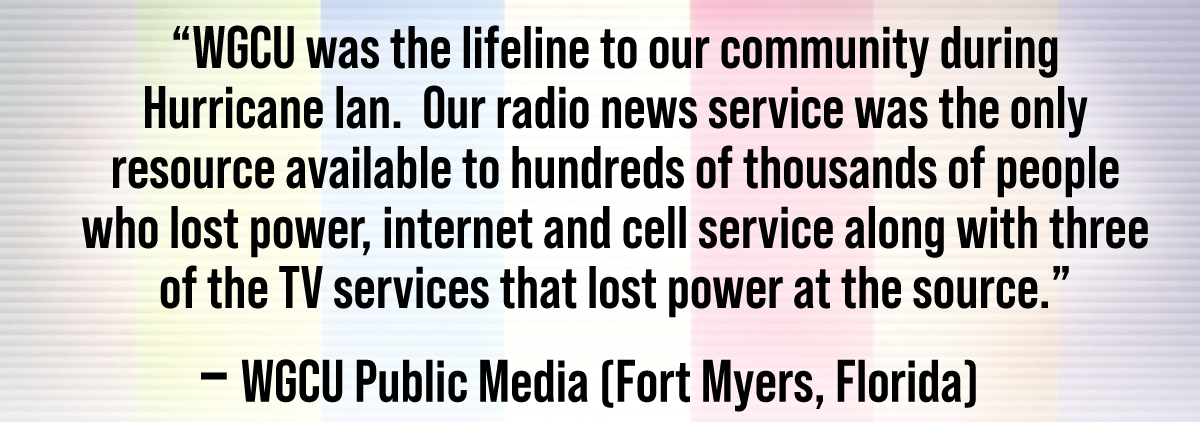 Public media stations depend on federal funding through CPB, Interconnection, and Ready To Learn to carry out their public service missions. CPB funding supports more than 1,500 local public media stations. These dollars are reinvested locally and enable stations to leverage private support to ensure stations can reach their communities with quality noncommercial programming and services. Public media’s distribution system, Interconnection, ensures everyone can access public media programs and lifesaving emergency communications. Ready To Learn brings children, families, caregivers, and educators rigorously tested and evaluated educational content that is proven to close the achievement gap.
Public media stations depend on federal funding through CPB, Interconnection, and Ready To Learn to carry out their public service missions. CPB funding supports more than 1,500 local public media stations. These dollars are reinvested locally and enable stations to leverage private support to ensure stations can reach their communities with quality noncommercial programming and services. Public media’s distribution system, Interconnection, ensures everyone can access public media programs and lifesaving emergency communications. Ready To Learn brings children, families, caregivers, and educators rigorously tested and evaluated educational content that is proven to close the achievement gap.
Through more than 1,500 locally managed and controlled nonprofit media organizations, public media stations make a difference in the lives of Americans each day. Federal funding — amounting to $1.40 per American annually — makes it possible.
If federal funding ends, public media’s reach and impact would be in jeopardy. All while we face record-breaking natural disasters, a local news crisis, and learners who were left behind during pandemic school closures. We can’t let that happen. Please contact your Members of Congress now and tell them why federal funding for public media is essential for all Americans.

Follow Us